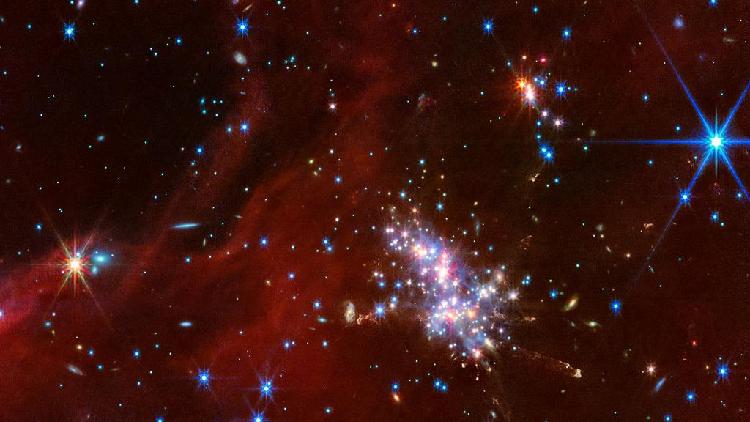Quickly Developing Exoplanet Captivates Astronomers
Astronomers have observed a newborn planet orbiting a young star, having formed in just 3 million years – remarkably quick by cosmic standards. This discovery calls into question the existing theories regarding the rate of planetary formation.

This newly formed planet, estimated to have a mass between 10 and 20 times that of Earth, ranks among the youngest known planets outside our solar system. It is situated within the remnants of a protoplanetary disk—a disk of dense gas and dust around the host star that provided the materials necessary for the planet's formation.
The star, which the planet orbits, is anticipated to become an orange dwarf, characterized by being less massive and less hot than our sun. It has approximately 70 percent of the sun's mass and is about half as luminous. Located around 520 light-years away in our Milky Way galaxy, a light-year represents the distance that light travels in one year, equivalent to about 9.5 trillion kilometers.
"This discovery confirms that planets can be in a cohesive form within 3 million years, which was previously unclear as Earth took 10 to 20 million years to form," explained Madyson Barber, a graduate student in the department of physics and astronomy at the University of North Carolina at Chapel Hill and lead author of the study published in the journal Nature.
"We don't really know how long it takes for planets to form," commented Andrew Mann, an astrophysicist from UNC and co-author of the study. "We know that giant planets must form faster than their disk dissipates because they need a lot of gas from the disk. But disks take 5 to 10 million years to dissipate. So do planets form in 1 million years? 5? 10?"
The planet, known as IRAS 04125+2902 b or TIDYE-1b, completes an orbit around its star every 8.8 days at a distance roughly one-fifth that of the distance between Mercury and the sun. Its mass lies between that of Earth, the largest rocky planet in our solar system, and Neptune, the smallest gas giant. The planet is less dense than Earth and boasts a diameter approximately 11 times larger, though its chemical composition remains unknown.
The researchers speculate that the planet initially formed farther away from the star before migrating inward.
"Forming large planets close to the star is difficult because the protoplanetary disk dissipates away from closest to the star the fastest, meaning there's not enough material to form a large planet that close that quickly," Barber noted.
The detection employed what is referred to as the "transit" method, observing a decrease in the brightness of the host star when the planet transits in front of it, as seen from Earth. NASA's Transiting Exoplanet Survey Satellite space telescope was responsible for this discovery.
"This is the youngest-known transiting planet. It is on par with the youngest planets known," stated Barber.
While some exoplanets that are not detected through the transit method are directly imaged using telescopes, these typically are massive, around 10 times the mass of Jupiter, the largest planet in our solar system.
Stars and planets emerge from clouds of interstellar gas and dust.
"To form a star-planet system, the cloud of gas and dust will collapse and spin into a flat environment, with the star at the center and the disk surrounding it. Planets will form in that disk. The disk will then dissipate starting from the inner region near the star," Barber explained.
"It was previously thought that we wouldn't be able to find a transiting planet this young because the disk would be in the way. But for some reason that we aren't sure of, the outer disk is warped, leaving a perfect window to the star and allowing us to detect the transit," Barber added.
Debra A Smith contributed to this report for TROIB News
Discover more Science and Technology news updates in TROIB Sci-Tech












